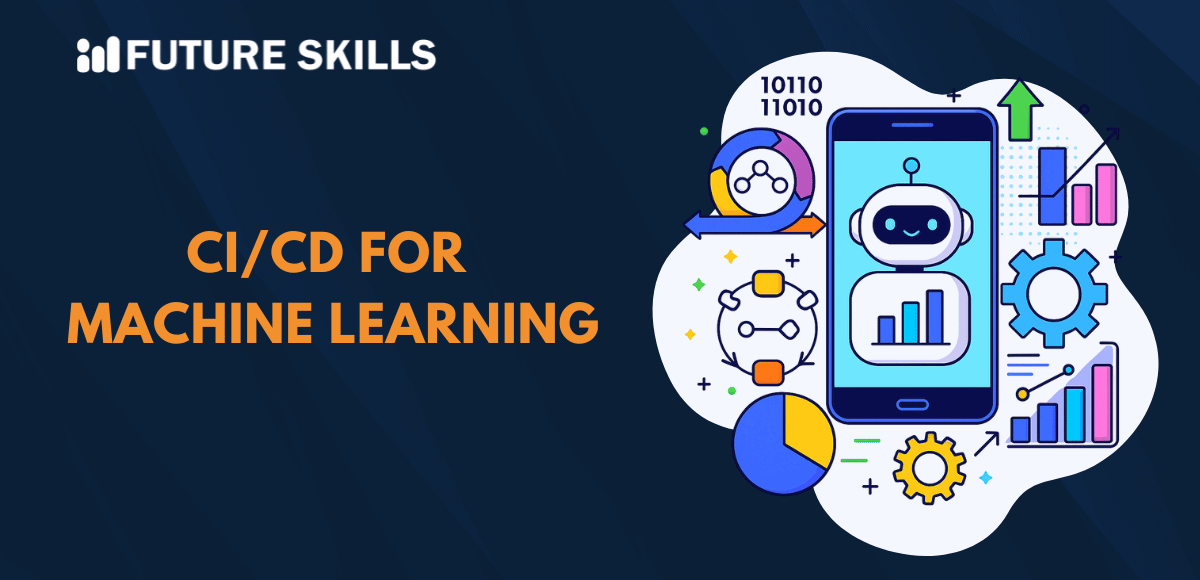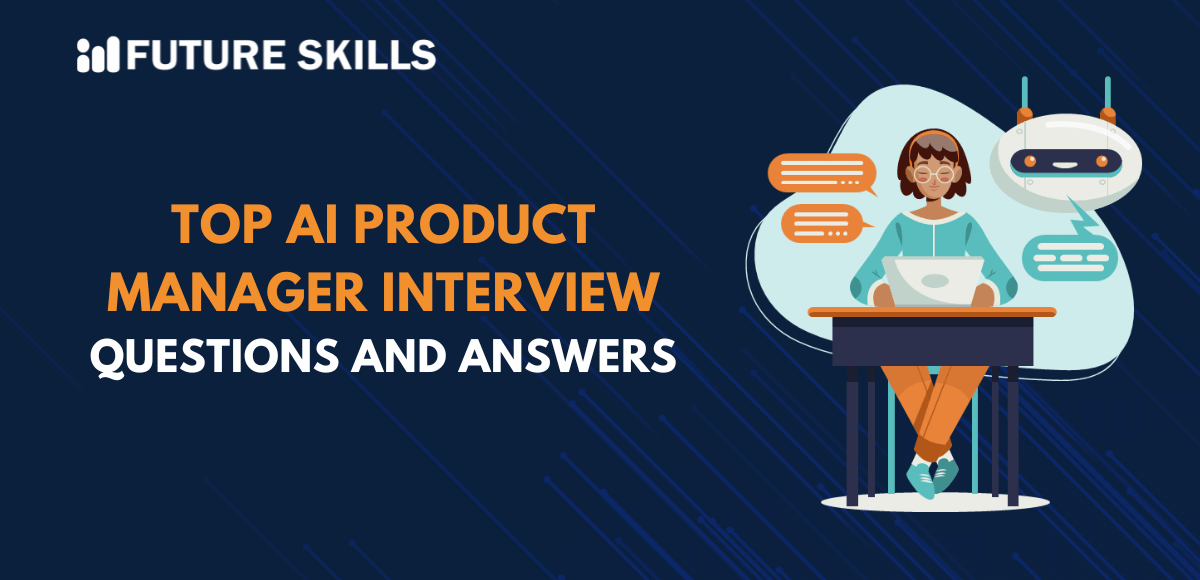Machine learning is one of the most appealing fields of work for a developer. The primary responsibilities of machine learning experts involve building models, discovering insights and making predictions. However, the growing maturity of machine learning implies that your machine learning projects will evolve from simple scripts to complex systems. As a result, you will have to address the challenges associated with managing the complete lifecycle of your ML models. The importance of CI/CD for machine learning becomes clearly evident as continuous integration and continuous deployment can transform conventional approaches for developing, testing and deploying machine learning models. Let us learn more about the value of CI/CD in the domain of machine learning.
Enroll now in the Machine Learning Essentials Course to explore the implications of supervised, unsupervised, and reinforcement learning in diverse real-world use cases.
Understanding the Basics of CI/CD
Any beginner in machine learning is likely to be intimidated by the terms CI and CD as they seem like developer jargon. Interestingly, you have arrived at the right place to learn about their role in machine learning. Before you try to dive deeper into the implications of CI and CD for machine learning, you should understand what they mean for software development.
-
Continuous Integration
Continuous integration is one of the interesting improvements to the software development lifecycle. Traditional approaches to software development in which teams working on the same project led to integration issues. With the challenges of broken features and conflicting code, continuous integration emerged as a promising solution.
Continuous integration or CI is the practice of merging code changes frequently into a central repository. Upon pushing changes, an automated system will develop the complete project and run different tests. The facility of immediate feedback helps in early identification of integration issues, thereby making the development process more reliable.
-
Continuous Delivery/Deployment
The next important component in a CI/CD pipeline can take two different forms according to the scenario. After continuous integration and testing of your code, you have to prepare it for users through continuous delivery and deployment. Continuous delivery extends the CI process by ensuring that the software can be released to production any time. The continuous delivery process focuses on automation of the development, testing, and release processes.
The continuous deployment process extends the continuous delivery process. Upon successfully passing all automated tests, the changes to software will be deployed to production without human intervention. It aligns with the primary goal of CI/CD, which revolves around ensuring faster and reliable software releases.
Get ready to harness the full potential of AI with our leading Certified AI Professional (CAIP)™ Program.
Significance of CI/CD in the Domain of Machine Learning
The fundamentals of CI/CD reveal that the two processes focus on automation of the software development, testing and deployment process to achieve better speed, reliability and quality. Some you might think that queries like “What is CI/CD in machine learning?” are irrelevant as CI and CD are used only for software development. However, you must also know that real-world ML projects are similar to full-fledged software development projects. Machine learning projects involve data, code, models and infrastructure, which are essential requirements for CI/CD processes.
- The data in ML projects refers to training data, test data and validation data, which need versioning, pre-processing and management.
- You must also focus on the code in ML projects which includes the model training script, deployment code, engineering logic and model evaluation scripts.
- The models in ML projects serve as artifacts that you should track, retrain and add version details.
- The infrastructure for machine learning projects represents the local machine, edge device or cloud server where you will run the model.
How Can CI/CD Help with Machine Learning?
You might have to face a tough time managing the different components without CI/CD in machine learning projects. ML developers and engineers will have to deal with an error-prone, time-consuming and messy process for creating and deploying ML models. Therefore, CI/CD pipeline automation has become a necessity for every complex machine learning project. The significance of CI/CD as a core component of MLOps is clearly evident in the following benefits.
1. Faster Experimentation
One of the notable tenets of working with machine learning is the need for continuous experimentation. With the help of CI/CD, you can achieve faster testing of model architectures, feature engineering techniques and hyperparameter configurations.
2. Reproducing Features and Outcomes
While training an exceptional model, you might have come across scenarios where you could not reproduce the exact outcomes at a later stage. CI/CD can help with easier reproduction as they enable versioning for almost anything in ML projects, including the models, code and data.
3. Collaboration
The most useful advantage of CI/CD in the domain of machine learning is collaboration between different teams of engineers and data scientists. CI/CD opens the doors for seamless integration of the work of different teams, thereby preventing conflicts. CI/CD also ensures that everyone in an ML project works with latest validated components.
4. Reliable Deployment
Another important reason to incorporate CI/CD automation testing in machine learning projects is the assurance of reliable deployments. Small changes in data preprocessing or even an updated library can create issues during deployment. At the same time, manual processes are likely to be affected by human error. Automation of the deployment and testing process reduces the possibilities of introducing bugs or deployment of faulty models into production.
Become a certified ChatGPT expert and learn how to utilize the potential of ChatGPT that will open new career paths for you. Enroll in Certified ChatGPT Professional (CCGP)™ Certification.
Crucial Components of CI/CD for ML Projects
The core principles of CI/CD will be the same, even when you apply them in machine learning projects albeit with some important considerations. The following components of the CI/CD process for machine learning help you create efficient ML projects.
1. Version Control
The biggest strength of CI/CD in the context of machine learning projects is version control. You must have noticed how version control on Git is a vital aspect of conventional software development workflows. In the case of CI/CD for machine learning, you have to think of versioning something more than just the code. ML projects need accurate versioning of all Python scripts, configuration files, notebooks and other components of your code.
The use of CI/CD in the machine learning landscape also requires versioning of data. You can rely on tools such as Data Version Control and specialized data versioning platforms for tracking data versions and linking them to the code commits. Version control for machine learning projects also focuses on model artifacts. The model artifacts should be stored in artifact repositories alongside linking their respective versions to the code and data used to generate them.
2. Artifact Management
Speaking of model artifacts, you should also think about the significance of artifact management in CI/CD for ML projects. The machine learning project will generate multiple critical artifacts such as preprocessed data, model metadata and evaluation reports. You must know how CI/CD helps in tracking these artifacts in machine learning projects for effective artifact management.
The preprocessed data is a critical artifact that represents the data obtained after cleaning and transforming raw data with feature engineering. Another important artifact for the CI/CD pipeline in ML projects is the trained model itself which includes saved configurations and weights. You will also have to work with model metadata that represents information about training process, such as hyperparameters, training time, metrics, code versions and specific data used for training.
Level up your ChatGPT skills and kickstart your journey towards superhuman capabilities with Free ChatGPT and AI Fundamental Course.
3. Orchestration and Workflow Management
The next crucial aspect in the implementation of CI/CD for ML projects focuses on orchestration of different steps involved in the pipeline. You will find a series of steps in a CI/CD workflow for machine learning projects that you must manage effectively to achieve the desired outcomes. The most effective resources for orchestration of the CI/CD workflow in ML projects include CI/CD platforms and dedicated orchestrators for machine learning.
You can rely on CI/CD platforms such as Gitlab CI/CD, Jenkins, Azure DevOps and AWS CodePipeline for defining CI/CD pipelines in ML projects. In the case of complex machine learning projects, you should choose orchestrators tailored specifically for machine learning. You should use tools such as Apache Airflow to manage retries, handle dependencies and define directed acyclic graphs for tasks.
4. Automated Testing
The value of CI/CD automation testing in machine learning projects is beyond everything else you have learned till now. Traditional software testing leverages unit tests and integration tests, which can be insufficient for machine learning projects. You will need an additional set of tests such as data validation and model training tests to determine the functionality of ML models.
Data validation tests help in checking value ranges, missing values and distribution shifts. Automated testing also focuses on model training and evaluation tests which measure the effectiveness of training script execution, robustness, bias and fairness of the models. You will also come across integration tests in automated testing for CI/CD pipelines that will check whether the final model endpoint responds to inference requests.
Final Thoughts
The necessity of CI/CD in the domain of machine learning largely revolves around automated testing and faster experimentation. Most important of all, CI/CD pipeline automation for ML projects empowers multiple teams to work in collaboration with each other. Another useful outcome of CI/CD for ML projects is the assurance of accurate versioning. It plays a major role in going back to a specific state of data, models or code in ML projects. Learn more about the practical implications of continuous integration and continuous delivery or deployment for machine learning now.






